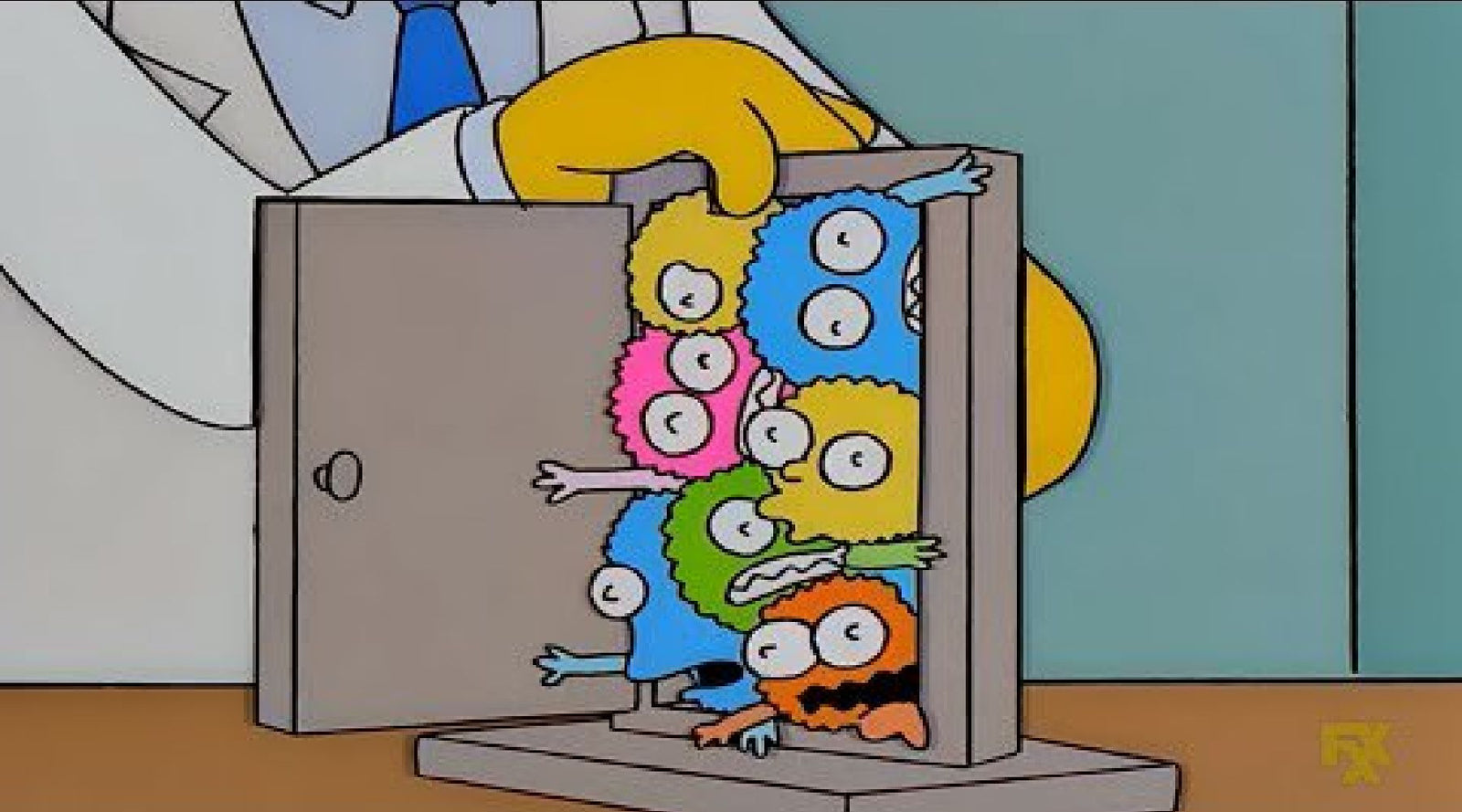Your Cart is Empty
we ship from colorado to maine


As you may recall, this episode was when Mr. Burns discovered he was the "sickest man alive." The doctor was explaining how all of the pathogens in his body were competing so much they all cancelled each other out. This one isn't about pathogens - I just thought this was the funniest representation of microbes that regularly pops into my head. Excellleeeent.
As the subject says, this is an email about solutions! We've been dropping the bad news lately about how much we believe things need to change, and how the meat shortages on the horizon aren't about Covid. And finally, that we'd love to talk about it! This is my biggest takeaway from all this. Just like the first step in most recovery programs is admission or acceptance, we as a culture need to admit that our systems are inherently flawed. Meat production and logistics are driven by the lowest costs and the highest bidders, and people, communities, and the environment suffer.
Enough about that - one possible solution? Korean Natural Farming, or KNF. It's a system of farming practices for vegetable, grain and livestock production allegedly dating back millennia, brought to the attention of ag by Cho Han Kyu of South Korea. Most of the research for his regenerative production practices have been researched by the University of Hawaii, and researcher Michael Duponte is NMP's main contact at the U of H for KNF practices.
The practice we've used the most here at the farm, and we believe could easily be used by large-scale pig farmers is the Inoculated Deep Litter (IDLS) bedding system for pigs. This one works so well that it's now an NRCS-approved manure management strategy.
The basics are simple: create an environment similar to the forest floor...bedding and manure compost so quickly with the right mix of environment and microbes, that there is no need for mechanical removal, no smell, and no disease vector! We've used this type of system for over seven years now for winter housing for pigs. The requirements are: a bed of charcoal, logs in a 2' base, and then a mix of green chop and straw or any other bedding. Basically, lots of carbon, just like the forest floor! Then, a culture pulled from the local forest (more about this in future emails), and you're cooking with microbes!

Here, you can see our base layer of logs, which has charcoal beneath it. I think of the charcoal as a "microbial database." All of the tiny surface area features are places where microbes can live and then be called upon to assist in fermentation and decay. The logs are a massive source of long-term carbon, and the green and brown bedding introduce more carbon and microbes. Finally, the culture is introduced and the system is complete...almost. Once you add animals, the system is really complete!

This picture was taken five years ago, and we'venever removed bedding once!That's the real beauty of the IDLS - not only is it odor-free, and better for animals, there is NO MANURE MANAGEMENT.
We don’t use this system year-round for any of our pigs except the nursery. The nursery piglets are on a slightly higher protein feed, and they stay inside for a week or two to get used to people being around them, then we give them access to the outside until they’re at least 80 lbs. Once they’re big enough, we move them out to pasture with the other pigs to graze.
HOWEVER, this system would be a massive improvement for farmers who currently raise pigs in confinement. Farmers could adapt this easily for feeder/grower/finisher houses, and some in Hawaii are even using this system for farrowing. No odor, no fossil fuels for manure and nutrient management, and after 25-30 years, you have a massive forest floors’ worth of beautiful soil to apply to ag fields. It would require one year of investment for 20+ years of benefit to animals, people and the environment.
It’s a big step in the right direction, although it’s still confinement if there is no outside access. But to be realistic about this, we have to think about our culture and its addiction to factory farming, fossil fuels, and general environmental destruction.Consider the 12 steps according to Russell Brand. A bit less God language, though very similar for those of you familiar with the AA God-centered version. Particularly steps 4-6:
Think about these steps with respect to our society. If we can’t admit there’s a problem collectively, we’ll never make it here. How do we come together to admit this? Surely conventional ag sees their problem right now? Right?
Comments will be approved before showing up.